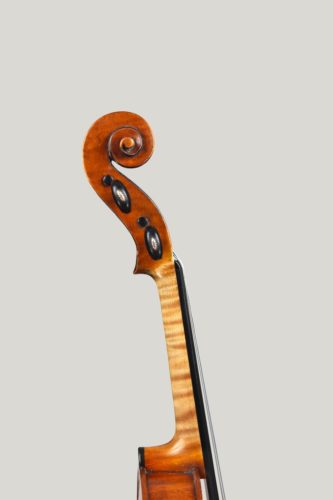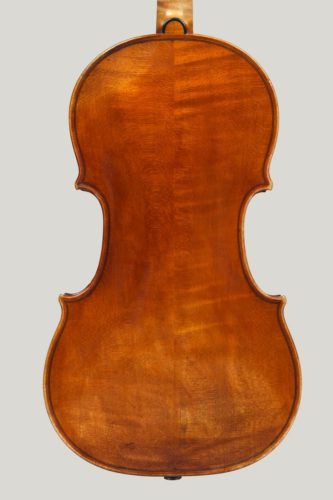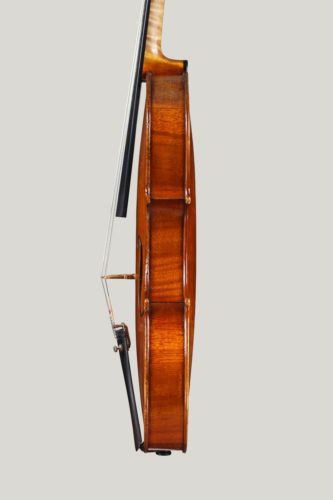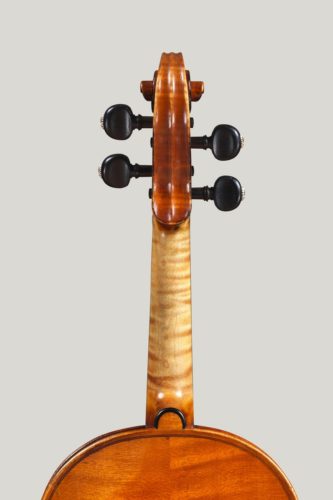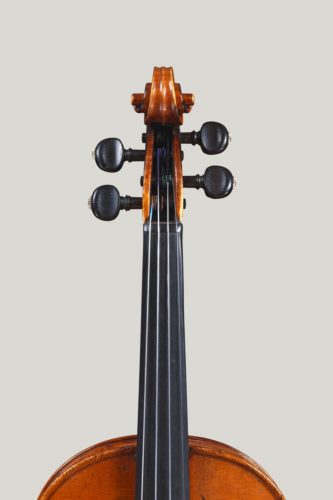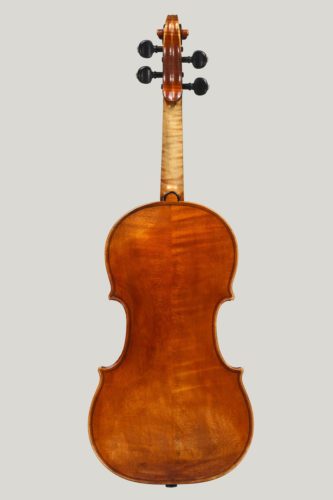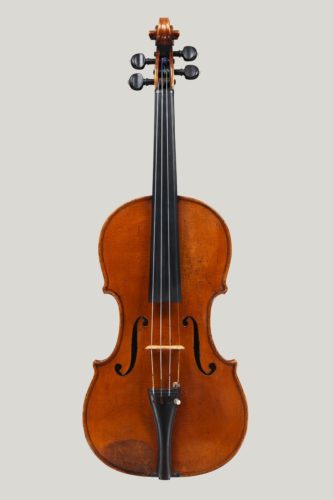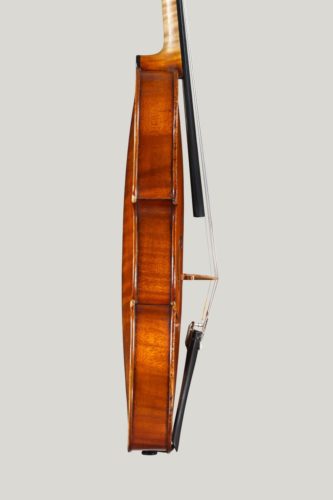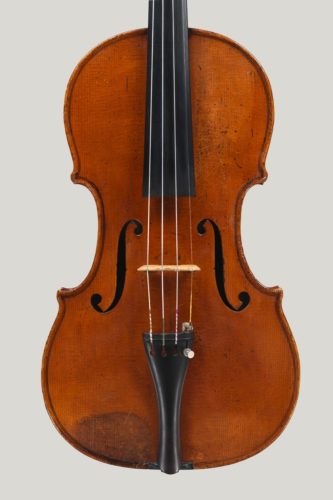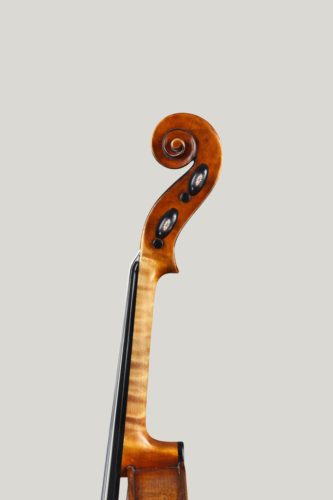Giuseppe Rocca
Violin made by Gisueppe Rocca in Turin in 1850. Maria Angelika Carlsen plays on this instrument.
The most important Italian violinmaker of the 19th century, Giuseppe Rocca was born in Barbaresco near Alba in 1807. It was in nearby Turin where he made his reputation, firstly as an apprentice to Giovanni Francesco Pressenda, and then in his own right from about 1840.
Shortly before his death in 1865, he moved to Genoa, where his last few years were inevitably less productive, although his profession was eventually taken up by his son Enrico. 1850, the year of this violin, represents the height of his achievements. Having grown away from his master Pressenda’s style, Rocca turned increasingly towards the accurate rendition of Stradivari models, and then – like other leading European makers influenced by Paganini – to the work of Guarneri del Gesù. No maker before this period would have given serious consideration to del Gesù as an alternative to Stradivari, Amati or even Jacob Stainer.
For his Guarneri model, Rocca invariably used the pattern of the “Alard” del Gesù of 1742. The “Alard” was then owned, and is now named after, Jean-Baptiste Vuillaume?s son-in-law, the violinist Delphin Alard. The “Alard” is still kept in the Musée de la Musique in Paris and is recognised as one of the best preserved masterpieces of the classical period of Cremonese violinmaking. Rocca’s copy is quite accurate in outline and arching, but is made with the natural neatness and refinement which is evident in all his work, and does not fully embrace the wild and almost rustic craftsmanship which characterises the original. The soundholes remain faithful to del Gesù’s original in form and positioning, but are more cleanly cut. Rocca’s scroll bears only a superficial resemblance to the rather crudely formed head of the “Alard”. It presents a sophisticated interpretation of an earlier masterpiece, made in Rocca’s own distinctive manner.
It is interesting to compare this with Vuillaume’s more impressionistic rendition of del Gesù’s later “Ole Bull” violin, made in the same year and also in the collection of Dextra Musica. As in Vuillaume’s copy of the “Ole Bull”, Rocca has made no particular attempt to match the appearance of the wood of the original. The “Alard” itself is distinguished by a beautifully flamed one-piece back; Rocca’s copy has a two-piece back, albeit of beautifully flamed maple, the same used for the ribs and scroll. The front is of fine grained alpine spruce, in two halves jointed centrally. The violin was finished with a full varnish coat which was not aged or antiqued as Vuillaume would have done. It is a deep orange brown, characteristic of Rocca’s work, which reflects the comparatively paler tint of the Guarneri, but not its soft texture.
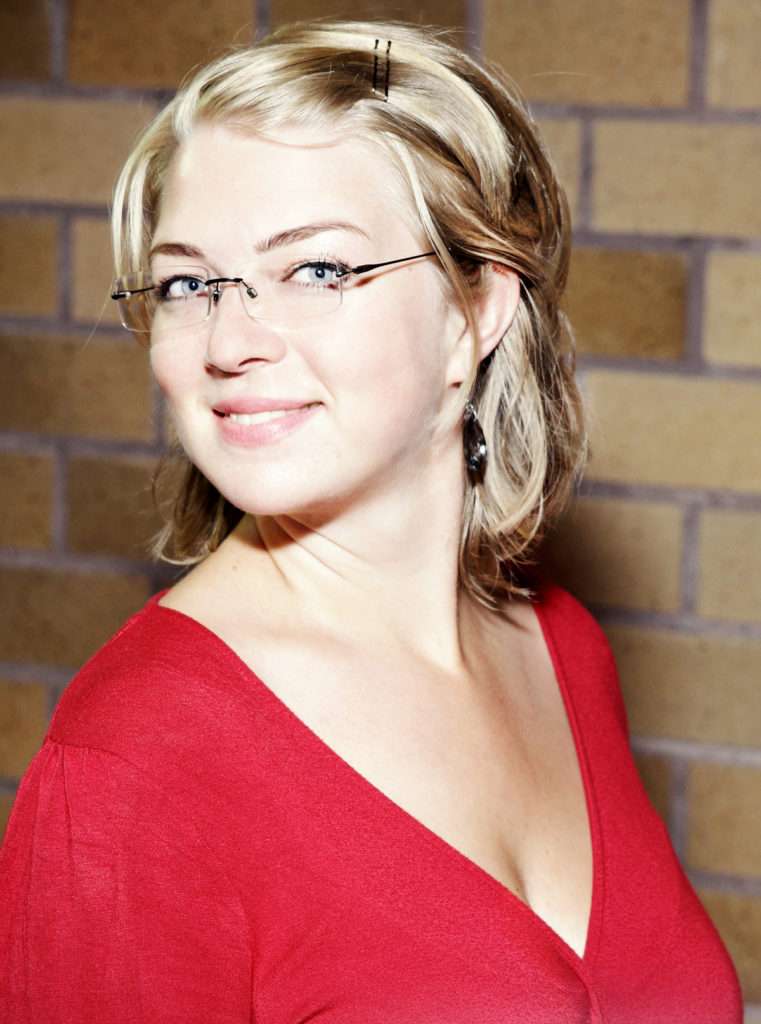
Maria Angelika Carlsen
Maria Angelika Carlsen (b. 1988) currently holds the position as concertmaster for the Stavanger Symphony Orchestra. Moreover, she has been the leader and artistic director of the young chamber orchestra Ensemble Allegria since its foundation in 2007.
